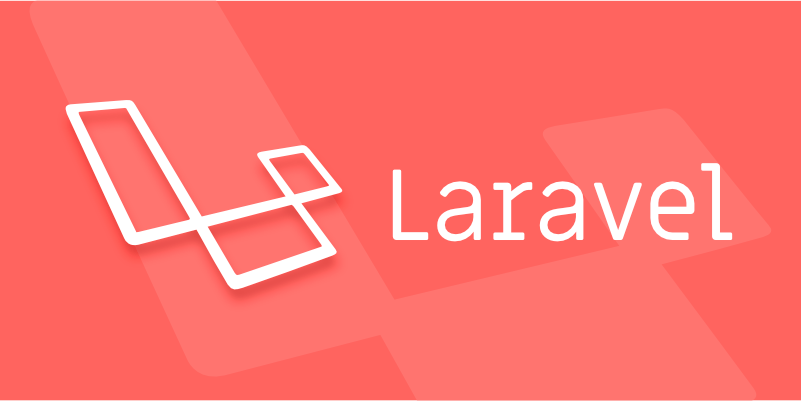There are three main ways to run raw SQL queries in Laravel. First, use the DB::select method to execute the original query, pass the SQL string and bind parameter array to prevent SQL injection and return the resulting object array; second, use DB::statement() to perform insert, update, or delete operations; finally, use DB::raw() to embed raw SQL snippets in Eloquent queries, suitable for complex queries or aggregation logic, but overuse should be avoided to maintain maintainability. Always use parameter binding to ensure security and use raw SQL only when necessary (such as complex queries, performance optimization, or legacy databases) to reduce dependency on specific database engines.

In Laravel, even though Eloquent ORM is the go-to tool for most database interactions, sometimes you just need to run a raw SQL query. Whether it's for performance, complexity, or convenience, Laravel makes it pretty straightforward.

Here's how to do it right.
Using DB::select for Raw Queries
The simplest way to run a raw SQL query is by using the DB::select method. It allows you to write plain SQL while still benefiting from Laravel's database connection handling and result hydration.

use Illuminate\Support\Facades\DB; $results = DB::select('SELECT * FROM users WHERE active = ?', [1]);
- The first argument is your SQL string.
- The second is an array of bindings — this helps prevent SQL injection.
- It returns an array of PHP objects, so you can loop through them or access fields directly.
If you're not selecting data but running an insert, update, or delete, use DB::statement() instead.
Binding Parameters the Right Way
When writing raw queries, always use parameter binding instead of concatenating values directly into the SQL string. This avoids SQL injection vulnerabilities.

For example, here's how you should do it:
$userId = 5; $results = DB::select('SELECT * FROM orders WHERE user_id = ?', [$userId]);
Or, if you prefer named bindings (especially useful for longer queries):
$results = DB::select('SELECT * FROM users WHERE id = :id', ['id' => 5]);
- Use
?for positional placeholders - Or use
:namefor named placeholders - Pass the values in an array as the second argument
This keeps your query secure and readable.
Running Raw Queries in Eloquent Models
If you're using Eloquent but still want to write raw SQL, you can use the DB::raw() method inside your queries.
For example:
$users = User::select(['id', 'name', DB::raw('COUNT(orders.id) as order_count')])
->leftJoin('orders', 'orders.user_id', '=', 'users.id')
->groupBy('users.id')
->get();-
DB::raw()tells Laravel to treat that part as raw SQL - It's useful when building complex queries with aggregations or custom logic
- You can also use it in where clauses or order by statements
But be careful: if you overuse DB::raw , your query can become hard to maintain or test.
When to Use Raw Queries
You don't need raw SQL for every situation, but there are times when it makes sense:
- When dealing with complex joins or subqueries that are hard to express with query builder methods
- For performance-critical parts of your app where you want full control over the SQL
- When working with legacy databases that don't follow Laravel's naming or structure conventions
Just remember: raw SQL ties you more closely to a specific database engine, so if you plan to switch databases later, it might complicate things.
Basically, that's how you safely and effectively run raw SQL queries in Laravel. It's not complicated, but it does require attention to security and structure.
The above is the detailed content of How to perform a raw SQL query in Laravel?. For more information, please follow other related articles on the PHP Chinese website!

Hot AI Tools

Undress AI Tool
Undress images for free

Undresser.AI Undress
AI-powered app for creating realistic nude photos

AI Clothes Remover
Online AI tool for removing clothes from photos.

Clothoff.io
AI clothes remover

Video Face Swap
Swap faces in any video effortlessly with our completely free AI face swap tool!

Hot Article

Hot Tools

Notepad++7.3.1
Easy-to-use and free code editor

SublimeText3 Chinese version
Chinese version, very easy to use

Zend Studio 13.0.1
Powerful PHP integrated development environment

Dreamweaver CS6
Visual web development tools

SublimeText3 Mac version
God-level code editing software (SublimeText3)

Hot Topics
 Creating Custom Validation Rules in a Laravel Project
Jul 04, 2025 am 01:03 AM
Creating Custom Validation Rules in a Laravel Project
Jul 04, 2025 am 01:03 AM
There are three ways to add custom validation rules in Laravel: using closures, Rule classes, and form requests. 1. Use closures to be suitable for lightweight verification, such as preventing the user name "admin"; 2. Create Rule classes (such as ValidUsernameRule) to make complex logic clearer and maintainable; 3. Integrate multiple rules in form requests and centrally manage verification logic. At the same time, you can set prompts through custom messages methods or incoming error message arrays to improve flexibility and maintainability.
 Adding multilingual support to a Laravel application
Jul 03, 2025 am 01:17 AM
Adding multilingual support to a Laravel application
Jul 03, 2025 am 01:17 AM
The core methods for Laravel applications to implement multilingual support include: setting language files, dynamic language switching, translation URL routing, and managing translation keys in Blade templates. First, organize the strings of each language in the corresponding folders (such as en, es, fr) in the /resources/lang directory, and define the translation content by returning the associative array; 2. Translate the key value through the \_\_() helper function call, and use App::setLocale() to combine session or routing parameters to realize language switching; 3. For translation URLs, paths can be defined for different languages ??through prefixed routing groups, or route alias in language files dynamically mapped; 4. Keep the translation keys concise and
 Working with pivot tables in Laravel Many-to-Many relationships
Jul 07, 2025 am 01:06 AM
Working with pivot tables in Laravel Many-to-Many relationships
Jul 07, 2025 am 01:06 AM
ToworkeffectivelywithpivottablesinLaravel,firstaccesspivotdatausingwithPivot()orwithTimestamps(),thenupdateentrieswithupdateExistingPivot(),managerelationshipsviadetach()andsync(),andusecustompivotmodelswhenneeded.1.UsewithPivot()toincludespecificcol
 Sending different types of notifications with Laravel
Jul 06, 2025 am 12:52 AM
Sending different types of notifications with Laravel
Jul 06, 2025 am 12:52 AM
Laravelprovidesacleanandflexiblewaytosendnotificationsviamultiplechannelslikeemail,SMS,in-appalerts,andpushnotifications.Youdefinenotificationchannelsinthevia()methodofanotificationclass,andimplementspecificmethodsliketoMail(),toDatabase(),ortoVonage
 Strategies for optimizing Laravel application performance
Jul 09, 2025 am 03:00 AM
Strategies for optimizing Laravel application performance
Jul 09, 2025 am 03:00 AM
Laravel performance optimization can improve application efficiency through four core directions. 1. Use the cache mechanism to reduce duplicate queries, store infrequently changing data through Cache::remember() and other methods to reduce database access frequency; 2. Optimize database from the model to query statements, avoid N 1 queries, specifying field queries, adding indexes, paging processing and reading and writing separation, and reduce bottlenecks; 3. Use time-consuming operations such as email sending and file exporting to queue asynchronous processing, use Supervisor to manage workers and set up retry mechanisms; 4. Use middleware and service providers reasonably to avoid complex logic and unnecessary initialization code, and delay loading of services to improve startup efficiency.
 Understanding and creating custom Service Providers in Laravel
Jul 03, 2025 am 01:35 AM
Understanding and creating custom Service Providers in Laravel
Jul 03, 2025 am 01:35 AM
ServiceProvider is the core mechanism used in the Laravel framework for registering services and initializing logic. You can create a custom ServiceProvider through the Artisan command; 1. The register method is used to bind services, register singletons, set aliases, etc., and other services that have not yet been loaded cannot be called; 2. The boot method runs after all services are registered and is used to register event listeners, view synthesizers, middleware and other logic that depends on other services; common uses include binding interfaces and implementations, registering Facades, loading configurations, registering command-line instructions and view components; it is recommended to centralize relevant bindings to a ServiceProvider to manage, and pay attention to registration
 Understanding Dependency Injection in Laravel?
Jul 05, 2025 am 02:01 AM
Understanding Dependency Injection in Laravel?
Jul 05, 2025 am 02:01 AM
Dependency injection automatically handles class dependencies through service containers in Laravel without manual new objects. Its core is constructor injection and method injection, such as automatically passing in the Request instance in the controller. Laravel parses dependencies through type prompts and recursively creates the required objects. The binding interface and implementation can be used by the service provider to use the bind method, or singleton to bind a singleton. When using it, you need to ensure type prompts, avoid constructor complications, use context bindings with caution, and understand automatic parsing rules. Mastering these can improve code flexibility and maintenance.
 Managing database state for testing in Laravel
Jul 13, 2025 am 03:08 AM
Managing database state for testing in Laravel
Jul 13, 2025 am 03:08 AM
Methods to manage database state in Laravel tests include using RefreshDatabase, selective seeding of data, careful use of transactions, and manual cleaning if necessary. 1. Use RefreshDatabasetrait to automatically migrate the database structure to ensure that each test is based on a clean database; 2. Use specific seeds to fill the necessary data and generate dynamic data in combination with the model factory; 3. Use DatabaseTransactionstrait to roll back the test changes, but pay attention to its limitations; 4. Manually truncate the table or reseed the database when it cannot be automatically cleaned. These methods are flexibly selected according to the type of test and environment to ensure the reliability and efficiency of the test.






